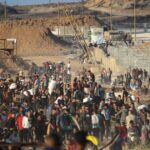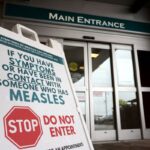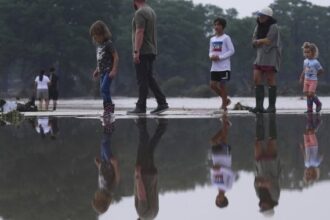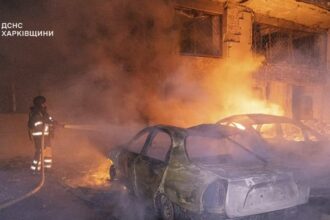In a devastating escalation that underscores Gaza’s dual crisis of violence and hunger, Israeli airstrikes killed 14 Palestinians in northern Gaza on Tuesday, while 10 others died in chaotic scenes as desperate residents scrambled for food aid. The incidents mark one of the deadliest days in recent weeks as the humanitarian situation in the enclave reaches catastrophic proportions.
“What we witnessed today was not just a military strike but the collapse of any semblance of humanitarian protection,” said Dr. Mahmoud Shalabi, a health coordinator with the Medical Aid for Palestinians organization, speaking from Gaza City. “People are being killed while seeking the most basic need—food.”
The Israeli military stated the airstrikes targeted Hamas fighters operating in the Jabaliya refugee camp, claiming intelligence had confirmed militant presence in the area. However, Gaza health officials reported that the casualties included three women and four children, raising further questions about the precision of these operations.
The food distribution point where 10 Palestinians died became a scene of desperation as thousands gathered upon hearing rumors of flour and canned goods arriving. According to eyewitnesses, the crowd surged forward when trucks appeared, leading to a crush that was exacerbated when shots were fired—though conflicting accounts exist about the source of the gunfire.
The United Nations World Food Program has repeatedly warned that Gaza stands on the precipice of famine. More than 85% of Gaza’s 2.3 million residents are now internally displaced, with limited access to clean water, medical care, and consistent food supplies. International aid agencies report that the average Gazan is surviving on fewer than 1,000 calories daily—less than half the recommended intake.
“We’re witnessing the systematic destruction of Gaza’s food security infrastructure,” said Francesca Albanese, UN Special Rapporteur on the Palestinian Territories, in a statement yesterday. “Agricultural lands have been bulldozed, fishing restricted, bakeries destroyed, and aid deliveries constrained to a trickle.”
The crisis has prompted renewed diplomatic efforts, with Canadian officials joining international calls for protected humanitarian corridors. Foreign Affairs Minister Mélanie Joly stated yesterday that Canada supports “immediate and unimpeded access for humanitarian aid” while continuing to advocate for the protection of civilians.
Economic analysts tracking the crisis estimate the damage to Gaza’s food production capacity will take years to restore. Before October 7th, local agriculture provided approximately 40% of Gaza’s food needs. Today, that figure has collapsed to less than 5%, according to economic assessments.
As night fell over Gaza, the sounds of renewed bombardment could be heard in several areas. Hospitals, already operating beyond capacity with severe shortages of medical supplies, braced for more casualties. At Al-Awda Hospital in northern Gaza, medical staff reported performing surgeries without anesthesia and using mobile phone flashlights during power outages.
The intensifying humanitarian crisis raises fundamental questions about the protection of civilian infrastructure during protracted conflicts: When a population can neither flee nor access basic necessities, what responsibility does the international community bear to ensure their survival beyond expressions of concern?
























